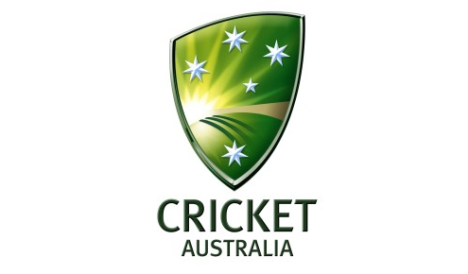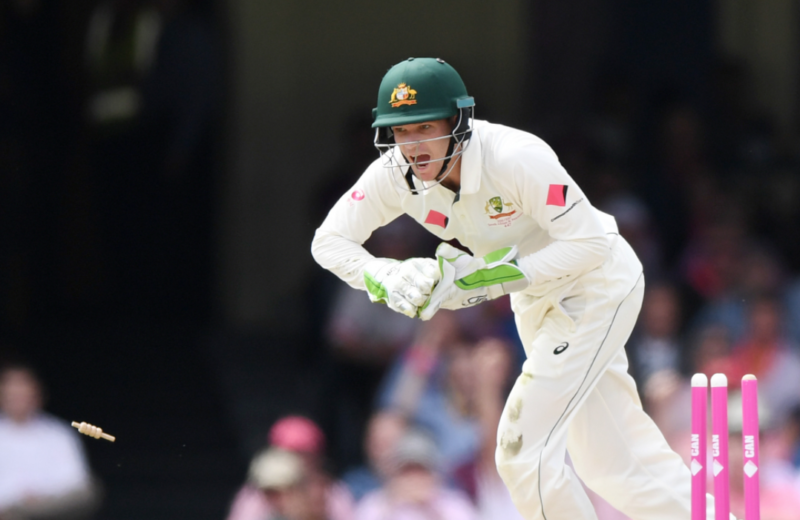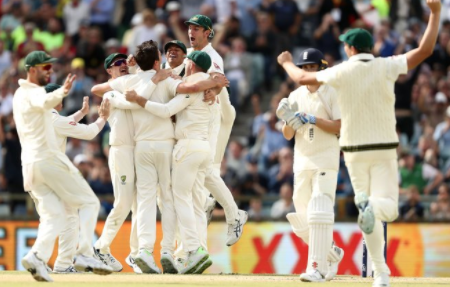
What you need to know about the cricket rights negotiations
Cricket Australia is yet to decide the fate of its broadcasting rights deal. As negotiations continue, Mumbrella’s Zoe Samios looks at the potential ways this deal will play out for all the networks, and what that means for advertisers.
Negotiations for Cricket Australia’s broadcasting rights were never going to be a smooth ride, but the last few weeks were not supposed to be this bumpy.
Cricket Australia could not have anticipated a ball tampering scandal, its chairman abruptly calling Ten “bottom feeders” and Nine winning a new major tennis broadcasting deal from Seven.
However it isn’t just the unpredictable events the association has had to deal with. Nine had made it clear it isn’t going to be paying more without obtaining digital rights, Seven finished off last financial year with more than $800m in debt, and Ten has just leaped out of administration and into the hands of its American owners, CBS.
Despite all this, Cricket Australia still wanted a $1bn deal for its broadcasting rights, over a five-year period. And, it also doesn’t want to hand over its digital rights to a major commercial network, preferring instead to compete in the digital space on its own.
That’s where things get tricky.
As it stands, the current Australian media climate doesn’t allow for a $1b cricket deal so inevitably, none of the above has improved the situation.
One senior media buyer tells Mumbrella: “That feels very very expensive, particularly given cricket has had an okay ratings period but it hasn’t had an excessively great ratings period.”
In addition to this, from describing Ten as “bottom feeders” to abrupt rejections of offers, Cricket Australia’s discussions have been terse, and are not what any network wants or needs ahead of a new deal.
But what could the broadcasting landscape look like once this is all over?
What if Nine retains the cricket?
With a market capitalisation of almost $2bn, half-yearly TV revenue of $636.2m and a half-yearly earnings before tax, depreciation and amortisation (EBITDA) of $171.9m, Nine is in a strong position to retain the cricket rights. But there’s still a few things to consider.
Nine has just won the rights to Tennis Australia’s broadcasting from 2020 to 2024. In it, are those elusive digital rights it so badly wants from Cricket Australia.
From a consumer perspective, Nine is always to blame for a lack of cricket coverage on its traditional platform, 9Now, during the summer – consumers point to the network, rather than the sporting administration body. Having these digital rights alleviates that situation.
But then there’s the issue of monetising their own content. Connected TV and streaming are increasingly prevalent. Without digital rights, Nine cannot sell digital advertising around the cricket. That’s a massive loss to the network making Cricket Australia’s $1b request significantly less appealing.
“The underlying trend is audiences will continue to migrate from just straight linear terrestrial service into other devices,” Victor Corones, managing director of Magna Global Australia explains.
“The networks bring a large audience to Cricket Australia and they need them to keep the sport highly visible and highly accessible to large audiences across each of the seasons. Without them, that would be much more challenging.
“As you move into mobile devices there are a lot of barriers that come into that and not only are we talking about the issue or the cost of data as being one, because not everyone has free data in terms of accessing on a mobile device when out, some may be strategic partnerships with telcos.
“As much anyone who wants to play in that space will want to control the rights, they just need to find the best way they can maximise that opportunity at any point in time,” he says.
The most recent update reported to be in the works by the national papers is a $900m joint deal between Nine and Ten. Nine has allegedly not moved its price for test cricket. What that suggests is it is refusing to pay a premium without those digital rights.

Malone is confident the network can run both cricket and tennis across summer, should Nine obtain the cricket rights
And Nine has made a point of expressing the benefits of a multifaceted relationship with the sporting codes. Just this week, Nine’s sports boss Tom Malone said the network was investing in an “any-platform” strategy to ensure the coverage is available to all consumers, anywhere, any time.
But let’s say Nine retains the test cricket for both men and women; its Wide World of Sport will now include almost every major sport in Australia. That cricket deal will sit alongside NRL, tennis, netball, golf and wrestling.
Cricket and tennis both largely run in summer, but Nine’s Malone assured Mumbrella they would be able to manage the two on the same network.
But at any given point, one of the sports will have to go to a multi-channel and the two associations may not want this. Main channel brings in more eyeballs. Multi-channels can do this, but it is a lot harder to pull off.
“They’ve got three channels, so there’s no problem in terms of bandwidth but there is a problem with who goes on the multi-channels,” one senior buyer says.
Corones argues there will be ways to balance the sport.
“It’s not insurmountable,” he says.
“There are going to be ways to balance it, but it just comes down to scheduling and strategies and how they choose to bring it to consumers. We are at a really interesting point where the model of advertising is really being reframed.
“In a world now where there are multiple touch points for a consumer and a consumer wants to take greater control, it’s now about how to you evolve to meet those needs and how to make it available across platforms and devices,” he says.
“You are talking about – particularly over summer – top ratings shows that are attracting a lot of eyeballs. From an advertising viewpoint, that is very attractive.
“They are high-reach properties that are attractive when overall summer ratings are down. They become quite an important inclusion.”
What happens if Nine loses the cricket?
There is a chance Nine may lose the broadcasting rights to the test cricket – the rights which have been in its hands since the Packer days. If that happens, there’ll be a hole in Nine’s programming next summer.
Hugh Marks has previously said it has a Plan B, though the details of that are not yet clear.
Sporting events like cricket and tennis are crucial in the lead up to the first major program of the year. In Nine’s case, that show is Married at First Sight which pulled unforeseeable numbers earlier this year.
Without the cricket, would Nine’s Married continue to pull the numbers it did? Perhaps it will. But sport can be crucial and one year of losing cricket could prove challenging for the network.
Chris Walton, Nunn Media’s managing director, would be very surprised if Nine let the cricket go, but concedes if they did, it would have an impact.
“Those big meaty sponsorships that people do for the summer on the back of the cricket, they will go. That will be a lot of revenue to replace,” he says.
But Walton understands Nine’s viewpoint, describing all of these sports deals as “risky”.
“If I was any of the stations and you want a typical $100m commitment over the next six years, if you want us to confirm that now, and you’re telling me to make a bet on how people are going to be viewing and in what numbers in five or six years time – nobody knows that, so you need to retain the flexibility within these agreements to adapt and monetise in line with how people are viewing.
“I’d be a very nervous executive if I was committing that amount of money, but leaving a potential way to that people can view or consume the sport out of the remit of the agreement.”
Corones says not having a launch pad for the big shows would be one of the bigger challenges.
“It’s always been a really important launch pad for networks to promote their upcoming shows as well. So like advertisers are looking for reach and coverage to promote their products, networks, on the flip side, are also using those properties to make sure as many people know about their up and coming shows to make sure the audiences are flowing through beyond the sporting events.
Is one year worth the pay off? According to Walton and Corones, probably.
“This is a long-term play and you would have to think those things are being taken into consideration when you’re making these sort of plays. We’re in the industry where we look at performance year on year, so there can be a bit challenging when you don’t have a set of numbers to trade off. But I see that more as a hiccup,” Corones says.
Where’s Ten in all this?
Ten an interesting player in the negotiations. Following CBS’ acquisition, Ten is potentially in the strongest financial position.
Plus, an official statement from Ten said: “Any negotiations with Cricket Australia are confidential, but we have always said we are committed to continuing our partnership with Cricket Australia, which may include cricket beyond the highly successful Big Bash League.”
Earlier on, a joint between of $130m was rejected by Cricket Australia, described as “not complaint”. It did not ask for a new bid and was aimed at ‘breaking up the consortium’, the AFR reported.
On Sunday, the AFR’s Max Mason reported a six-year $900m bid between Nine and Ten had been proposed, which would see the international Twenty20 and 50-over matches move to Ten under the new offer.
One senior media buyer says: “Ten’s got more money than everybody else. They also don’t need to justify their expenditure.
“They can raise the money quite quickly so it just depends what price it is.”
And so they should. Since Ten won the rights to the Big Bash in 2013, \it has delivered strong numbers for the network.
For Ten, the BBL leads into I’m A Celebrity, Get Me Out of Here and brings audiences in for the summer period.
But what if Ten lose the Big Bash?
Should Ten lose Big Bash, it would leave a hole in Ten’s summer programming.
Nunn Media’s Walton says the BBL is a major revenue earner for Ten and its “biggest property of the year”.
“It will have a significant [impact]. It’s not as if Ten has performed brilliantly in the ratings year on the back of the very successful Big Bash season,” he says.
“As far as the new owners [CBS] go, if you’ve got the biggest growing sports property that you’ve had for the last few years and within a year of being bought by a big new owner you lost it, it’s that impact on the local management.”
But Ten losing the BBL could be a big loss for Cricket Australia.
When the Twenty/20 matches used to sit on Foxtel, one of the problems it faced was audience reach.
A senior media buyer added it would be difficult to do cross-promotion work at the beginning of the year, should Ten, or Seven, end up without a summer sport.
“It’s more expensive to do it above the line and attracting the audience becomes more difficult.”
Could Seven win the Big Bash?
As it stands, from a summer sports perspective, Seven could be in strife from 2020.
Interestingly, the network has stayed quiet in the national media reports on the issue.
It also refused to match the Tennis Australia deal. Perhaps it thought Nine overpaid, but regardless, from 2020, it could have no summer sports offering.
The problem Seven has is it’s not in a position to pay high premium prices for broadcasting rights. And it can’t. Last financial year Seven posted a $745m loss, with CEO Tim Worner citing premium sports rights prices as a major issue.
But it has been reported Seven might want the cricket.
What could it afford? The Big Bash.
It would be a bold decision for Cricket Australia to move from Ten, but it could for the right price.
Seven has the audience numbers – just not the experience with cricket.
Plus, should Seven win, they’ll be battling an extended format of BBL with tennis for one year.
It has also been reported the BBL is looking to extend its games coverage, creating more of a clash.
Walton says that could be a big challenge.
“But given its one year in the context of a six-year deal, they’d make some big promises or big commitments about how they’ll promote or market it,” he notes.
For the network, losing a major sport in tennis means losing its major “launch pad”. Seven has been a massive advocate for pushing its cooking show My Kitchen Rules across summer in order to attract large audiences at the beginning of the year.
Without it, there is a potential impact for Seven, Corones explains.
“That then affects their overall performance with their other shows particularly if the big property was sitting on a competing network then they’ve got a much bigger job in promoting their shows and trying to attract eyeballs,” he says.
“So you can see why strategically this is really valuable for networks during these sort of tent pole events because it just gives them a better launching pad.”
But he adds there are plenty of advertisers who don’t want to advertise around sport.
“It comes down to the packaging and offering alternative solutions for advertisers and consumers who don’t want to necessarily tie themselves up for hours watching live sporting events,’ he says.
Where does Foxtel come into this?
Foxtel is different to all other players in this bidding war and for those who might think Nine could lose the cricket to Foxtel, the answer is no. But could Ten lose the Big Bash to Foxtel? Potentially.
In Australia, a subscription service like Foxtel cannot get its hands on certain cricket tests as an exclusive broadcaster. Why? There are anti-siphoning laws which means certain games are not allowed to be behind a paywall.
- One-day international (ODI) matches involving Australia played in Australia
- Twenty20 matches involving Australia, played in Australia
- Matches of the ODI World Cup played in Australia or New Zealand
- Matches of T20 World Cup involving Australia and the final
- International test matches involving Australia, played in Australia and Ashes test matches played in the United Kingdom against England
The only way Foxtel can broadcast the above is when a national or commercial broadcaster with a combined audience of more than half of the Australian population has purchased the rights.
However at the same time, sources told the AFR columnist Joe Aston Foxtel was working with Seven West Media for a free-to-air component to its deal.
Foxtel could be the way the free to airs lower the price of the deal as it could air all or part of the cricket matches as a simulcast.
“Their sports coverage is generally very good and you’ve also got the attraction of being able to offer extended ad-free coverage which appeals to people. They are of a little bit limited by anti-siphoning and the cap of their reach,” Walton says.
He adds a joint venture or partnership with Foxtel is a way of offsetting costs.
“I tend to agree that having a national sport keeping itself to just 30% penetration versus 100% penetration, there’s not a lot of sense in that,” he says.
But would a free-to-air want to pay a premium if it has to share coverage with Foxtel?
“Ultimately the market will pay what it thinks it is prepared to pay and at some point compromises need to be made and if you have that your must-have is that you have to have exclusivity or nothing then that’s something that you will play through negotiation. It will either work or it won’t,” Corones says.
When we talk about it exclusively, it’s good but it generally comes at a premium. But there are sort of diminishing returns in terms ‘at what point does that no longer makes sense when you’re paying above the odds.’”
So where does that leave everything?
As the AFR reported, a $150m per-season deal would be a 40% increase in broadcast rights compared to the previous five-year deal.
Walton says that request is “neither here nor there” but the networks will continue to fight it out to meet a compromise.
Another senior buyer points out advertisers might not want to pay 40% more for advertising around the sport.
But Walton sees Cricket Australia’s perspective throughout the whole ordeal.
“Cricket Australia would feel that have a strong case for the ongoing strength of international cricket with the added growth of the Big Bash over the last few years and they’ll feel they are bringing more to the table and therefore should deserve a bigger amount of money in return,” he says.
“You look at the top viewing shows – it is dominated by sport but you have to make these multi-million commitments, years in advance of realising the return and the numbers are getting bigger. It is balls of steel time.”











you saw nines WWS will have every sport….. how about this small thing called the AFL?
How does that work legally? It would be a load of crap if Foxtel can claim the rights of all ODI’S and men’s 20/20’s. The law is there to stop ‘anti siphoning’, yet you you seem to think that you are above the law and can change it to do what you want, it shows money talks then doesn’t it! We want to watch the men’s IDO’S, and 20/20’s, we can’t all afford and or refuse to pay for your expensive ‘sport packages’ when we only want to watch cricket! It’s disgusting that you can come along and change this system/law when it suits you!! Not impressed!!!!!!!